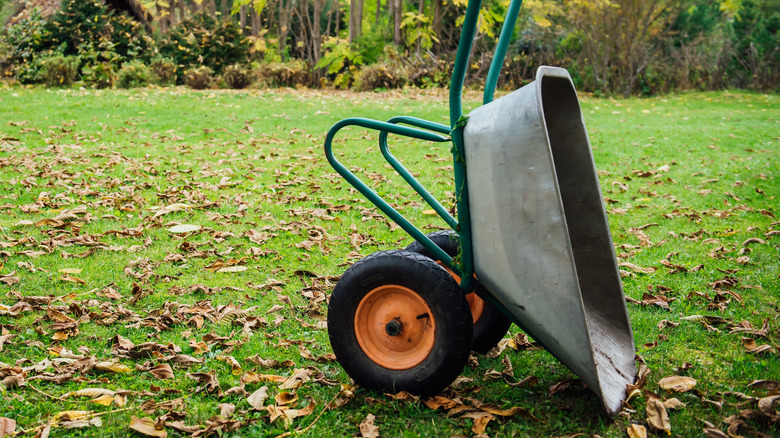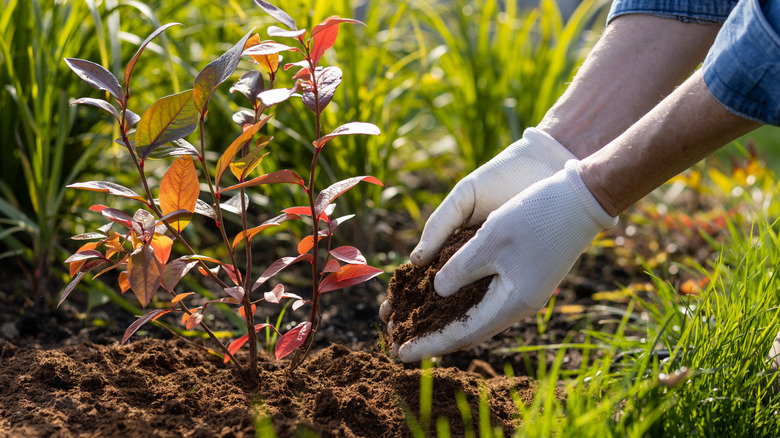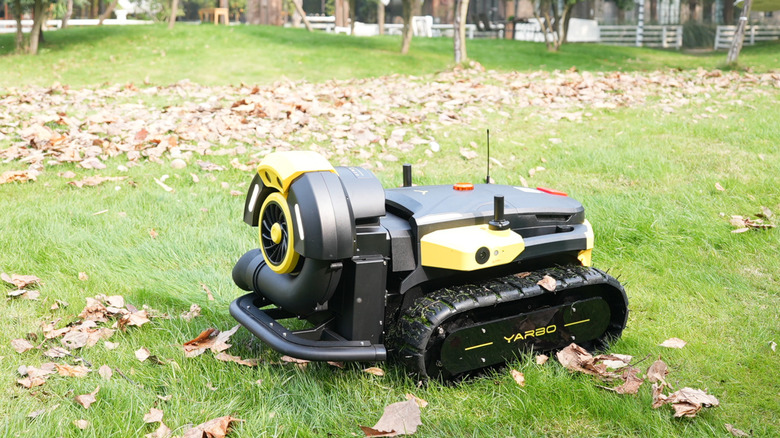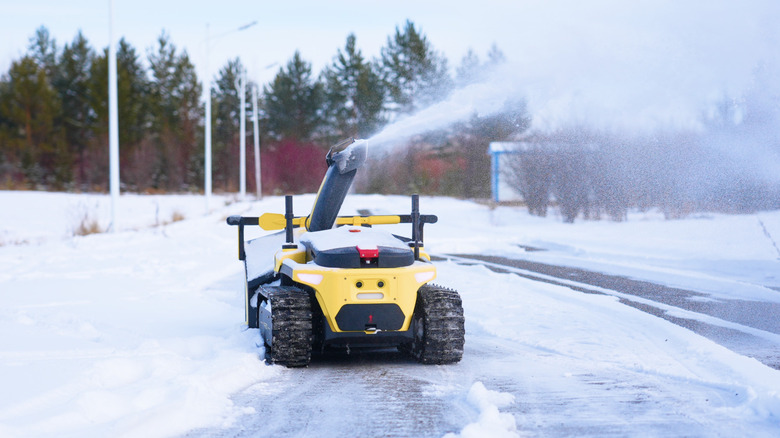How To Simplify Caring For Your Yard In The Fall And Winter
Sponsored Content. We may receive a commission on purchases made from links.
As every homeowner learns, lawn care needs don't disappear in fall and winter. But if you strategize a bit and bring in some technology, you can simplify your lawn care routines during the cooler, grayer months. The first order of business is to make a schedule of all the necessary chores for fall and winter that will ensure your lawn is as lush as possible during the rest of the year. Once you've made a plan, you can look into tools that make caring for your lawn extra easy, such as Yarbo's game-changing robotic leaf blower and snow blower. These devices will take care of the most tedious tasks for you, saving you time and energy.
While you won't have to keep up with the ceaseless race to maintain your turf grass in the fall and winter, there will still be some mowing to manage in the fall. And while we're acknowledging the obvious, there's also going to be the inevitable leaves and snow to deal with. Fall and winter are also good seasons for seeding, overseeding, aerating, and dethatching your grass, plus any soil amendments you have planned. Many homeowners will mulch in the early fall and use pre-emergent herbicide treatments through late winter. Simplifying a to-do list like this will depend, at least a little, on where you live. Your climate could push some tasks earlier in the summer or all the way until near spring, so the first strategy for simplifying your fall and winter lawn care is to make a list and a manageable schedule.
Make a schedule
When it comes to your fall and winter lawn care schedule, early fall is typically the busiest stretch of time. You'll need to refresh your mulch and apply pre-emergent herbicides. Depending on whether you have cool- or warm-season grass, there might be even more to do. Cool-season grasses require a bit more attention during the cooler months – you can count on some early fall mowing. Cool-season grasses also benefit from overseeding in late summer or early fall, and it's the ideal time for aeration and dethatching as well.
As the season moves toward mid-fall, you'll find there's still time to insulate your plants' roots with mulch. Fall will also see ongoing leaf cleanup, fertilizing for some plants, and maybe a bit more mowing. As late fall comes into view, good reasons to mulch (like protecting soil moisture and preventing erosion) linger. Late fall is also a good time to prepare your soil for the year to come by fertilizing, if you haven't yet — it's your last chance to get the cold-resistance benefits from a good dose of potassium. Amending the soil is wise to do at the end of fall, since the ground is bare and easier to work.
Winter is the perfect time for quick bursts of cleaning up between respites by the fireplace. Get a handle — a rake handle, if you must — on remaining leaves and debris in your yard and focus on areas like patios before the spring rush comes along. If you live in a cold climate, you'll of course need to remove snow from your driveway and sidewalks. When winter starts to show signs of turning into spring, you have one last opportunity to apply pre-emergents, dethatching, and soil amendment.
Use the right equipment
As made clear by the list above, there's a lot that needs to be done in a short amount of time. In order to simplify this list of to-do's, it's important to have the right tools on hand. While you could theoretically aerate a postage-stamp-sized suburban lawn with a screwdriver, finding seasonal simplicity is often a matter of using the right tool for the job that will make completing each task easy.
Tools like spreaders, sprayers, and aerators might be great options if you have a small yard. For the occasional need, you could rent tools for tasks like core aeration. However, a large downside to using highly specific equipment is the unitasker problem; having expensive gear dedicated to a relatively small task is an easy way to eat up your budget and your storage space.
Fortunately, modular systems solve many of these challenges, with a little investment upfront. For instance, Yarbo's leaf blower will blow your leaves into neat piles without you having to lift a finger. This device can even handle light snow removal when needed, making it perfect for those who live in climates without much snowfall. The real beauty of this product is the main component, Yarbo Core, which is basically a robotic tractor to which you can add modules like a mower, a snow blower, a leaf blower, a trimmer, or tow-behind implements like a spreader or aerator. You can also train it to follow you around with a trailer of mulch or even a beverage cooler, which would be useful when hot summer days roll back around. Investing in equipment from Yarbo makes completing all the tasks on your lawncare to-do list extra simple.
Take advantage of automation
On top of using the right tools, it's also wise to make sure all your tasks happen on time — ideally with as little involvement from you as possible. Sure, you could tape a list to the fridge and check it every week or so, but there are better options. At a minimum, set up reminders on an electronic calendar (something like Google Calendar works fine). But the more thorough you can be about it, the better, and that suggests letting your electronic personal assistant or your smart home platform in on the task list. Alexa will keep you on schedule.
Even better, if you use tools like the Yarbo snow blower, leaf blower, or lawn mowers, you can make a day of setting schedules through the company's app. Define various work plans for mowing and the like, set start and end times, set the frequency with which these tasks should happen, and then sit back and watch your tools do the work for you. Some of these tools are so refined that they seem to have minds of their own. Yarbo's snow blower, for example, can automatically schedule itself based on real-time weather forecasts and will start working the moment snowfall begins. You can even set the frequency of snow clearance in defined zones (for example, to prioritize clearing snow from your driveway). That's some pretty smart simplifying.



